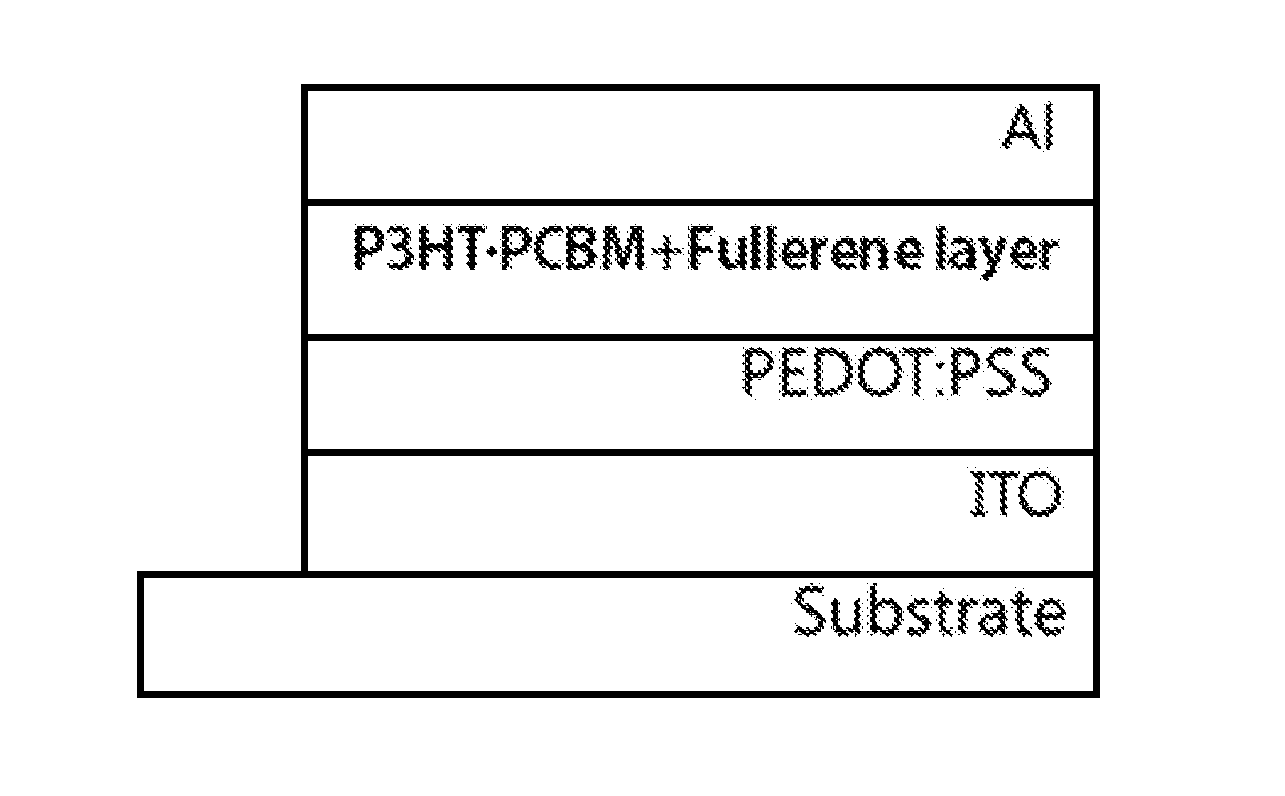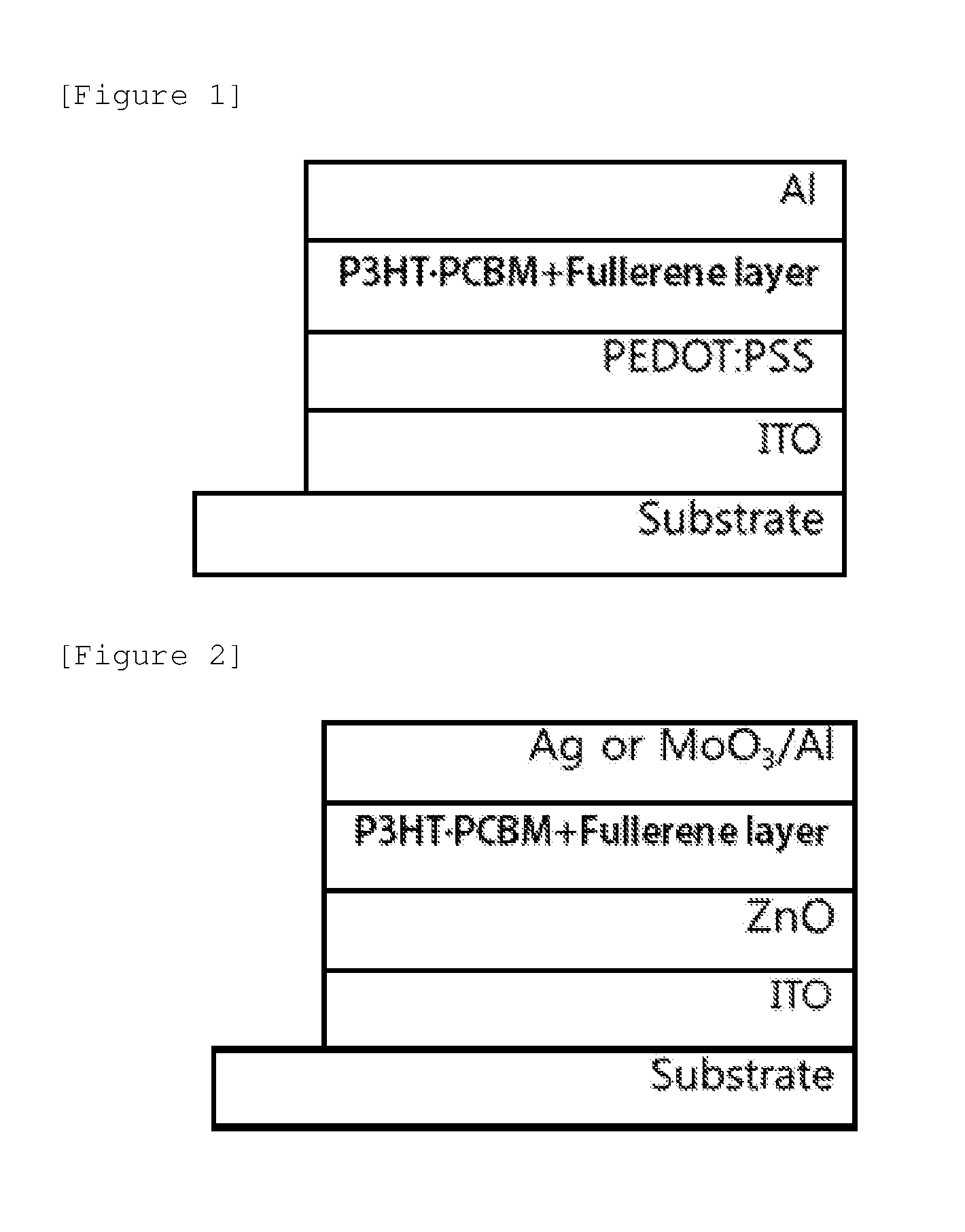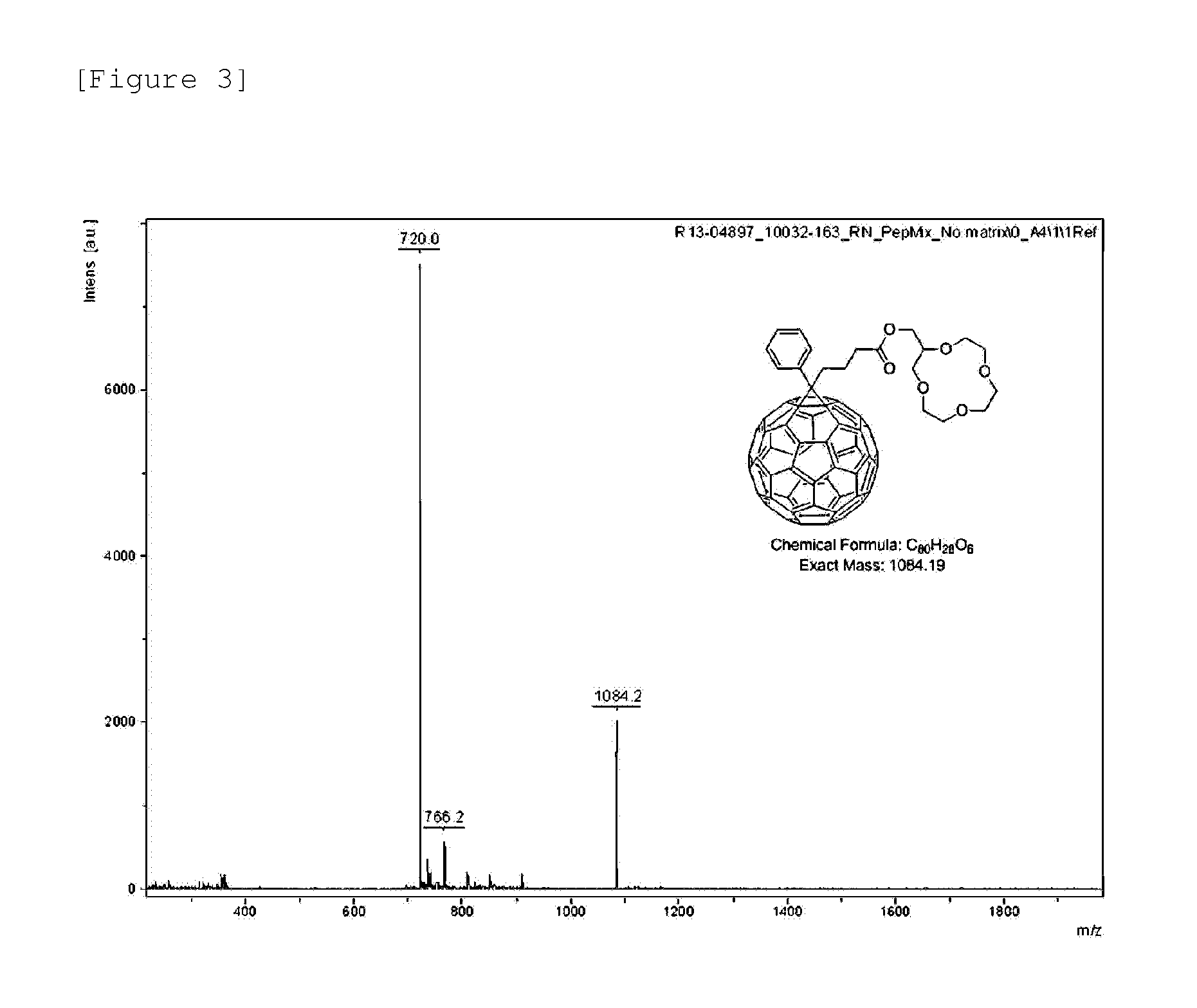Organic solar cell and manufacturing method therefor
- Summary
- Abstract
- Description
- Claims
- Application Information
AI Technical Summary
Benefits of technology
Problems solved by technology
Method used
Image
Examples
preparation example 1
Preparation of Chemical Formula 2-2-1
[0226]
[0227]1 g of PCBM was put into 80 ml of chlorobenzene, and the resulting mixture was subjected to reflux reaction at 180° C. for approximately 1 hour. 8 ml of hydrochloric acid and 20 ml of acetic acid were added thereto, and then the resulting mixture was subjected to reflux reaction at 180° C. for 16 hours. Whether PCBM disappeared was confirmed by TLC, and then the solution was concentrated until the amount of solvent became approximately 30 ml. PCBA, which is a sold sample obtained by precipitation with methanol, was filtered and dried. (yield=89%)
[0228]120 mg of the dried PCBA was put into approximately 5 ml of o-dichlorobenzene, and 0.067 ml of hydroxymethyl 12-C-4, 33 mg of 4-dimethylaminopyridine, and 51.4 mg of 1-ethyl-3-(3-dimethylaminopropyl)carbodiimide (EDCI) were added thereto at 0° C. The mixture was stirred for 12 hours while gradually increasing the temperature from 0° C. to room temperature. When the reaction was terminate...
example 1
[0231]An organic solar cell was manufactured in the same manner as in the Preparation Example of the organic solar cell, except that a Li+ ion composite of the fullerene derivative of Chemical Formula 2-2-1 prepared through the Preparation Example was added in an amount of 1% based on the total weight of the photoactive layer to the P3HT:PCBM solution in the Preparation Example.
example 2
[0232]An organic solar cell was manufactured in the same manner as in the Preparation Example of the organic solar cell, except that a Li+ ion composite of the fullerene derivative of Chemical Formula 2-2-1 prepared through the Preparation Example was added in an amount of 3% based on the total mass of the photoactive layer to the P3HT:PCBM solution in the Preparation Example.
PUM
| Property | Measurement | Unit |
|---|---|---|
| Phase | aaaaa | aaaaa |
Abstract
Description
Claims
Application Information
 Login to View More
Login to View More - R&D
- Intellectual Property
- Life Sciences
- Materials
- Tech Scout
- Unparalleled Data Quality
- Higher Quality Content
- 60% Fewer Hallucinations
Browse by: Latest US Patents, China's latest patents, Technical Efficacy Thesaurus, Application Domain, Technology Topic, Popular Technical Reports.
© 2025 PatSnap. All rights reserved.Legal|Privacy policy|Modern Slavery Act Transparency Statement|Sitemap|About US| Contact US: help@patsnap.com



